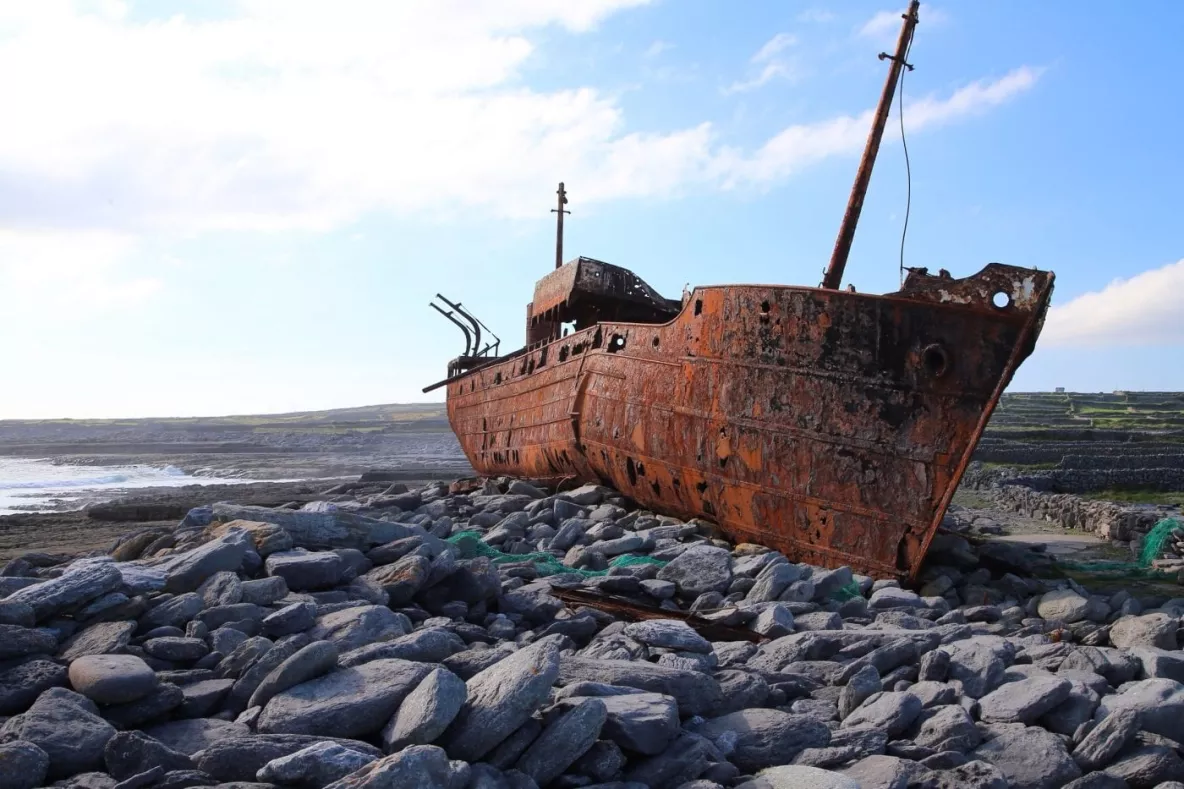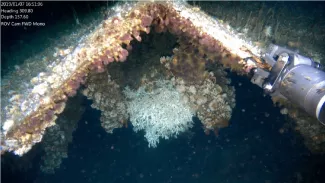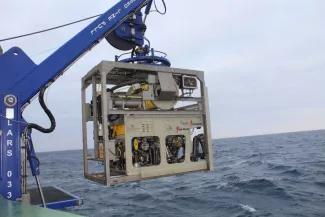

The Centre for Robotics and Intelligent Systems (CRIS) team has investigated a series of unknown shipwrecks off the west coast of Ireland during the ship-time operations in January this year. The survey cruise was carried out using the MRE ROV Etain, funded through SFI and piloted using University of Limerick’s advanced control software known as OceanRINGS. The ROV uses machine vision for autonomous controls unlocking a high level autonomy and enabling the scientists to operate in more challenging weather conditions and deep-water shipwrecks sites.
The ship time cruise had a number of scientific and technical goals, which included the mapping of unknown shipwrecks between 200m and 80m of water and the investigation of the habitats which have formed on these wrecks over the past 100+ years. In recent years, technical scuba divers have explored some of these wrecks located as deep as 150 metres. Invariably, the divers report that wrecks aggregate fish and in some cases provide a substrate for corals and other species of epifauna. As such, the wrecks act as artificial reefs and given the number of shipwrecks in Irish waters, may make an important contribution to maintaining coral and other species by providing refuge and stepping stones for colonisation. Profiting from favourable weather conditions for this time of year, the survey aboard the Research Vessel Celtic Explorer, successfully located and surveyed three unknown shipwreck sites between 80 and 200 metres of water. The shipwrecks, two of which are longer than 100 metres are believed to be a German U-boat, an Ocean Liner and an armed cargo vessel. A high definition TV survey of one of the wrecks revealed that intact parts of the ship were colonised by various colourful epifauna: anemones, solitary corals, oysters and brachiopods. The biggest surprise was finding a colony of the coral reef forming Lophelia pertusa, a stony coral species usually found below 500 metres or deeper in Irish waters. The colony was hanging from the apex of two plates where it was likely protected from fishing but still received a plentiful food supply. The discovery and high detailed survey of these shipwreck sites were possible for the first time through the technological innovations that the CRIS team have been trialling.

